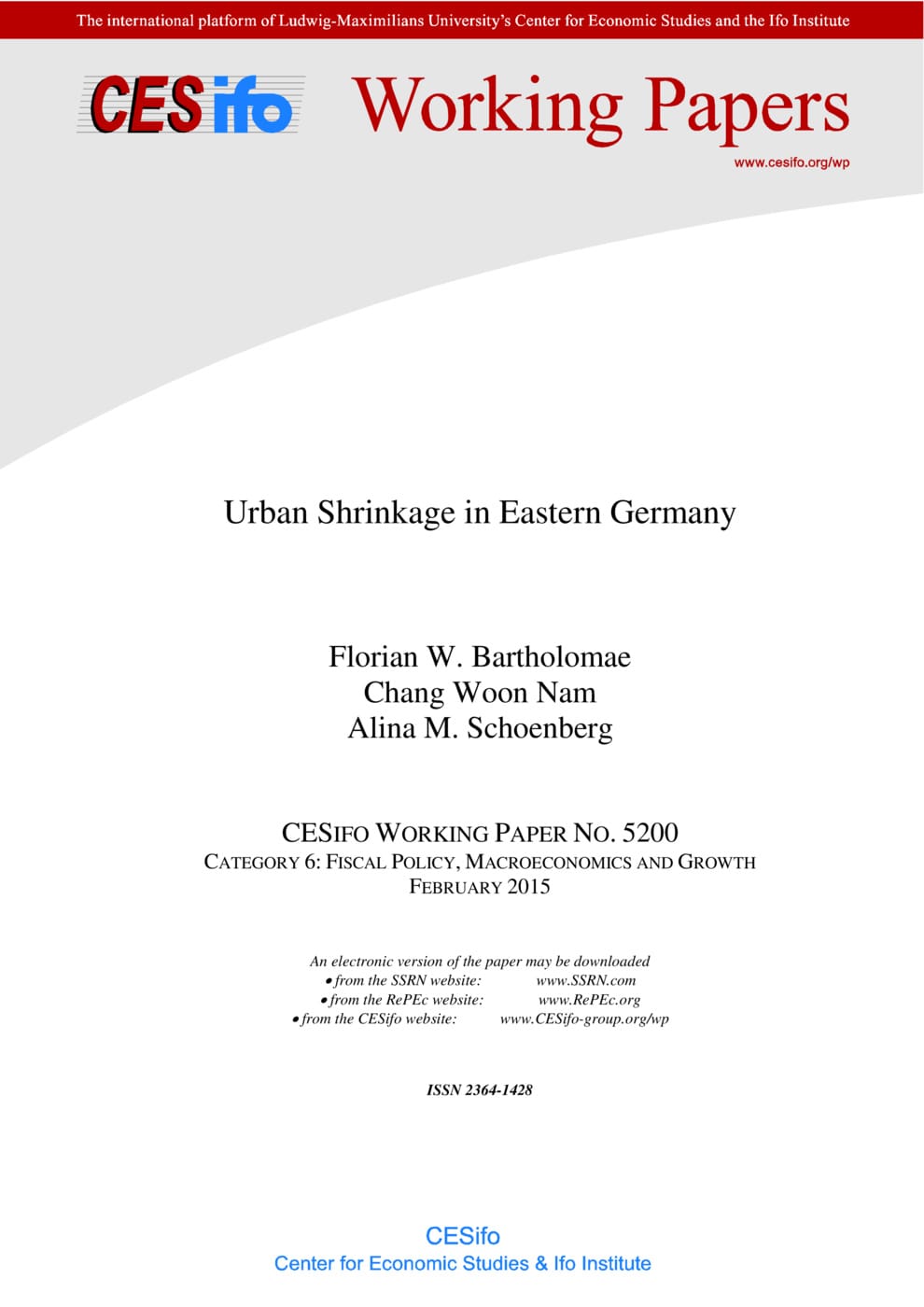Urban Shrinkage in Eastern Germany
CESifo, Munich, 2015
CESifo Working Paper No. 5200

This paper questions the widely applied parallelism of demographic and economic development in characterizing urban shrinkage in Germany, and argues that the usage of population change as a single indicator leads to incorrect policy recommendations for combating urban shrinkage. As the cases of several Ruhr cities (Essen, Gelsenkirchen and Dortmund) and East German cities (Erfurt, Rostock and Magdeburg) prove, urban economic growth can also be achieved thanks to the substantial presence of modern industries and business services, and despite declines in population size. The serious shrinkage of Halle, Cottbus and Schwerin is primarily due to failures in the post-industrial transformation process. Recent policy measures strongly oriented towards slowing the downsizing process of population (via urban regeneration measures to hinder suburbanisation and low core urban density) do not address this major problem effectively. More active industrial policy measures are required in these East German shrinking cities to create a competitive manufacturing sector (endowed with new high-tech firms) and to boost its growth interdependence with modern local services.
Public Finance
Fiscal Policy, Macroeconomics and Growth
Industrial Organisation